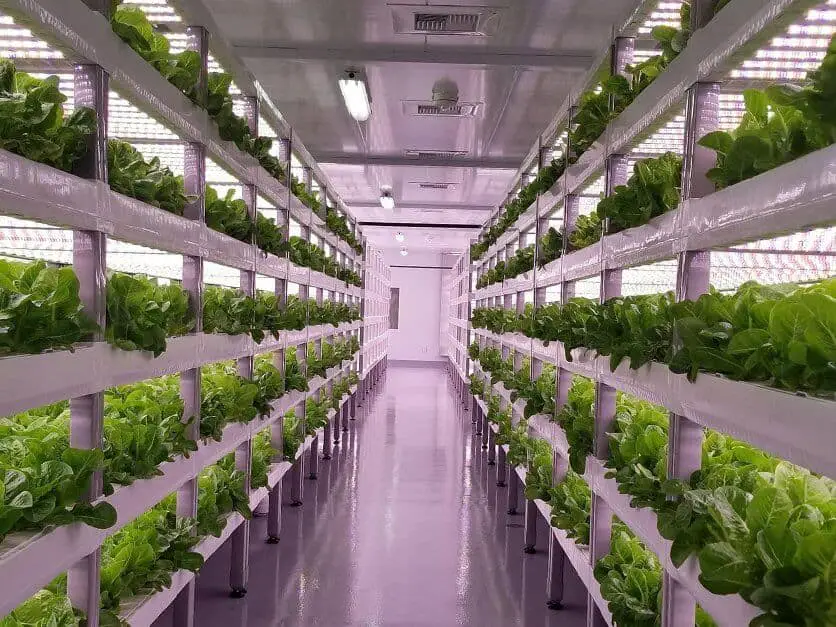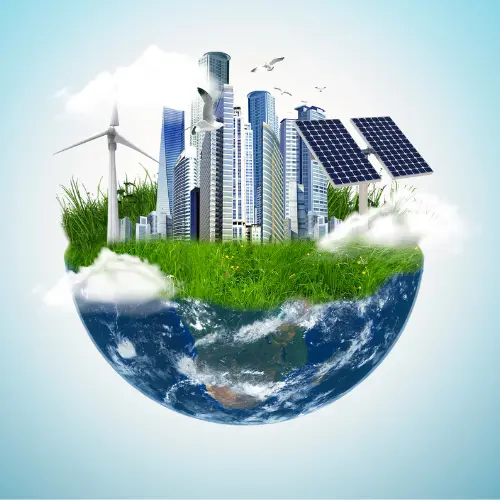Vertical farming is revolutionizing global food production. This modern method of farming involves planting food crops on top of each other in a controlled environment.
Does vertical farming use chemicals? Yes, vertical farming uses some chemicals. However, the amount of chemicals used in vertical farming is significantly lower than that used in conventional agriculture. Vertical farming uses less than 90 percent of the chemicals used in traditional agriculture.
As the global population increases, scientists are concerned about the impending food scarcity. Vertical farming is a ready solution for the sustainability of food production in the present and the future.
Vertical Farming and Chemicals
Vertical farming is becoming increasingly popular because of the environmental-friendly measures it employs. The lack of chemical use is one reason why modern farmers are attracted to this type of farming.
Vertical farming is a form of controlled environment agriculture. This type of agriculture focuses on four main things:
- Layout
- Lighting
- Growing medium
- Sustainability
The goal of vertical farming is to maximize limited space. Conventional farming requires large tracts of land to grow food. Vertical farming eliminates the need for large tracts of land by using a different layout. Crops are stacked on top of each other, forming a tower-like structure.
Light is essential for crops to germinate. Vertical farming uses a combination of natural and artificial lighting. In some settings, crops are rotated to ensure all plants receive light. The result is a sustainable type of farming that works in both rural and urban settings.
Conventional farming requires soil to grow crops. In vertical farming, the soil is substituted by:
- Aeroponics
- Hydroponics
- Aquaponics
Aeroponics involves using mist to grow crops instead of water in the soil. On the other hand, hydroponics uses water mixed with mineral nutrients.
Aquaponics combines hydroponics and aquaculture, which means growing crops and rearing crustaceans and fish in the same aquatic environment. Vertical farming is sustainable because the soil is not required, and less water is used.
Biological Controls
Vertical farming does not use pesticides or most farming chemicals. This type of agriculture relies largely on biological controls to keep pests away. Examples of biological controls in vertical farming include:
- Ladybugs
- Wasps
- Viruses
- Pathogenic nematodes
- Fungal spores
Ladybugs are released in a vertical farm to kill aphids. Wasps also control aphids by laying eggs on their back, causing them to die.
Another hindrance to vertical farming is the codling moth. Releasing entomopathogenic viruses onto the crops target the codling moths and kills them instantly. Entomopathogenic nematodes help protect plants from pests like vine weevils. The nematodes release a bacterium in the soil, which kills the weevil.
Fungal spores are used to kill powdery mildew that infects crops in a greenhouse setting. The fungal spores consume the mildew, therefore, protecting plants from damage.
By using biological control measures, vertical farming eliminates the need for chemicals in pest control.
Chemical Hydroponics vs. Organic Hydroponics
In organic hydroponics, farmers only rely on compost as a substitute for fertilizer. However, organic fertilizers are not always accessible or available.
The scarcity of organic compost created an alternative in the form of chemical fertilizers. These are fertilizers engineered in the lab, which are said to be 100% safe for plants. In addition, farmers may find it difficult to acquire enough organic compost for large-scale farming.
Chemical fertilizers come in handy because they are easily accessible and do the job. Popular chemical fertilizers used in vertical farming include:
- Copper sulfate pentahydrate
- Calcium nitrate
- Zinc sulfate dihydrate
- Boric acid
- Manganese sulfate monohydrate
- Potassium nitrate
- Magnesium sulfate heptahydrate
Benefits of Vertical Farming
Besides the elimination of chemicals, vertical farming has proven sustainable and beneficial in several ways. This method of agriculture promotes the sustainable production of food.
A Source of Fresh Food
Vertical farming is a viable solution for ending food scarcity in rural and urban communities. Increased urbanization leads to population growth, which causes the size of arable land to decrease.
Singapore is one of the countries that faced a challenge in supplying fresh food to the growing urban population. By employing vertical farming, Singapore was able to provide fresh food without relying heavily on imports.
Vertical farming reduces the cost of importing food and farm inputs, such as fertilizer. In addition, this type of farming eliminates the need for expensive long-term storage solutions. Research indicates storing food for prolonged periods causes it to lose its nutrition. Vertical farming ensures food remains fresh and maintains all its nutrients.
Increased Food Production
Vertical farming provides an answer to a food shortage in rural and urban environments. Although the initial cost of setting up a vertical farm is quite high, it is a long-term solution for adequate food supply.
Vertical farmers can supply food crops to people on demand. Individuals and corporations do not have to incur the cost of shipping food from outside.
Vertical farms bring food closer to people living in remote areas with limited access to supermarkets and grocery shops. Areas that were once food deserts, with limited food supply, now become food oases.
Vertical Farming Reduces Pollution
The use of pesticides is one of the leading causes of global pollution. Vertical farming cuts down on this type of pollution by employing biological control as an alternative to pest control.
Food trucks ferrying food for thousands of miles also contribute to environmental pollution. Studies indicate the transport sector is one of the biggest contributors to pollution in the world.
Vertical farming reduces the time food leaves the farms and reaches the consumer’s plate. By eliminating food trucks, vertical farming also reduces the amount of carbon emission in the atmosphere.
Does Not Rely On Conventional Weather
Controlled environment farming uses about 70 percent less water than conventional agriculture. This type of farming does not rely on rain or other weather conditions to thrive. Hydroponic farming allows you to control the farming environment reducing some of the risks of conventional agriculture. It guarantees yields even when climatic changes do not favor traditional agriculture.
Conserves Resources
It is estimated that 1 billion people lack access to clean water, while 2.7 billion people lack access to clean water at least once a year. Hydroponic and aquaponic farming reduces water usage in agriculture. This surplus water can be directed to homes that lack enough water for daily use.
Disadvantages of Vertical Farming
While vertical farming does not rely on conventional farming methods, it still has its shortcomings. One of them is the heavy reliance on technology. Hydroponics, aquaponics, and aeroponics rely on advanced technology for controlling lighting, humidity, and temperature. An imbalance in these environmental factors or power outages can cause significant losses on a vertical farm.
Vertical farming occurs in a controlled environment, making it difficult to take advantage of ecological processes such as cross-pollination. Insects like bees are introduced manually into the farm, which can be difficult and costly.
Vertical farming has a high cost of labor if set up in urban centers. The farm needs full-time maintenance and hiring labor in urban centers can be costly. Automation helps to reduce the cost of labor, but it also takes up the cost of technology. It takes a lot of funding to expand vertical farming to a large-scale level.
A large labor force is required to introduce biological controls on a farm. Pest control measures such as fungal spores and entomopathogenic nematodes require an expert to know how to use them on a farm.
Vertical farming requires more energy input compared to conventional agriculture. Many vertical farms use artificial lighting that consumes significant levels of energy. In addition, vertical farming can get in the way of traditional agriculture. It may be difficult to convince conventional farmers to give up their old ideas for this new technology. In the end, communities that rely on subsistence farming may suffer as they lose their way of life.
Vertical farming does not use chemicals but biological controls that protect crops and the environment. While hydroponics, aeroponics, and aquaponics all promise food sustainability for a growing population, they can be costly to set up.
With enough funding and technological advancements, vertical farming may be the future of food production.
References
https://www.tandfonline.com/doi/abs/10.1080/14620316.2019.1574214?journalCode=thsb20
https://www.tandfonline.com/doi/full/10.1080/15487733.2017.1394054
https://www.usda.gov/media/blog/2018/08/14/vertical-farming-future
https://ssir.org/articles/entry/feeding_the_future_of_agriculture_with_vertical_farming



Subscribe To Our Newsletter
Join our mailing list to receive news and updates. Don't worry. We will not smap you ;)
You have Successfully Subscribed!